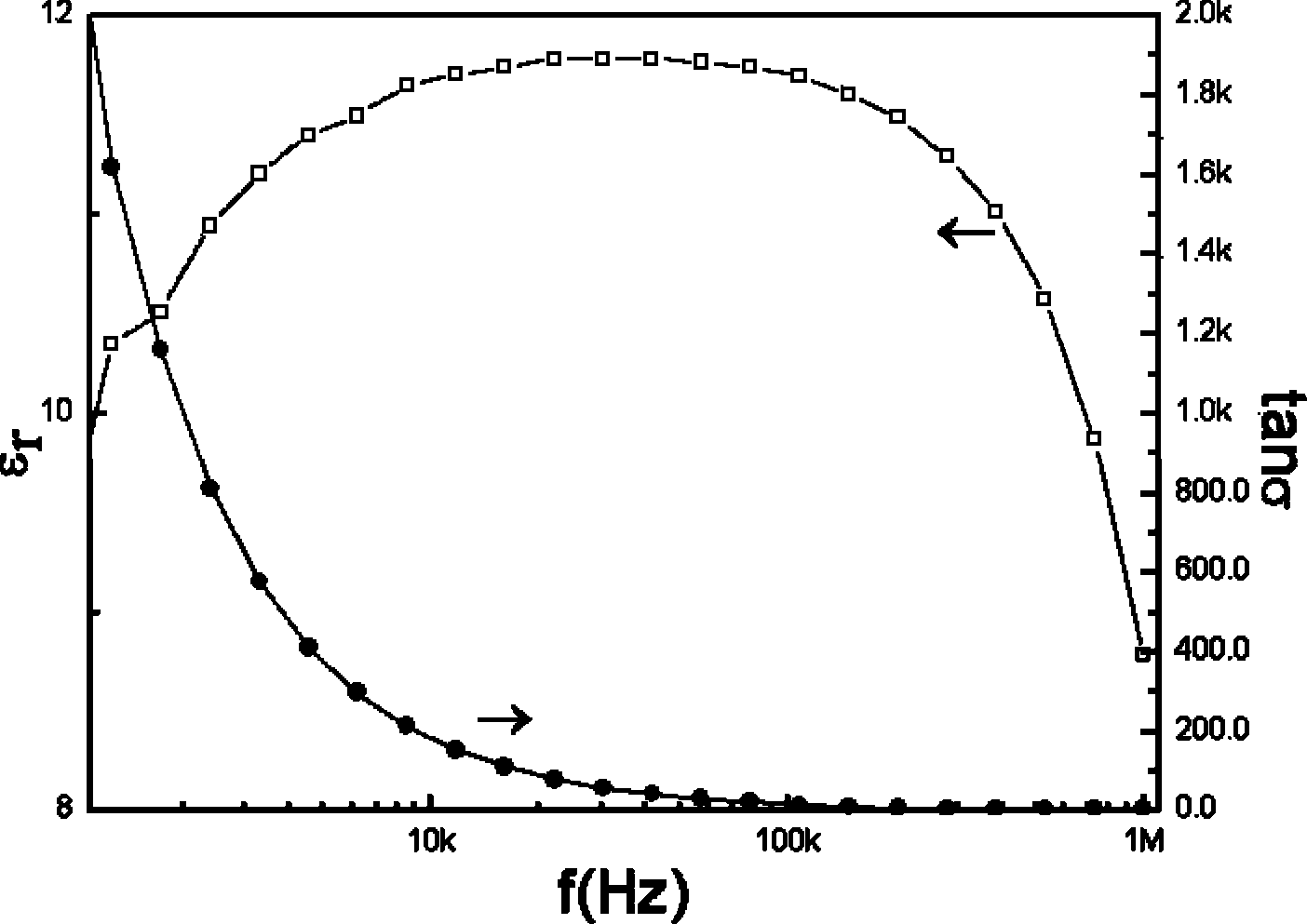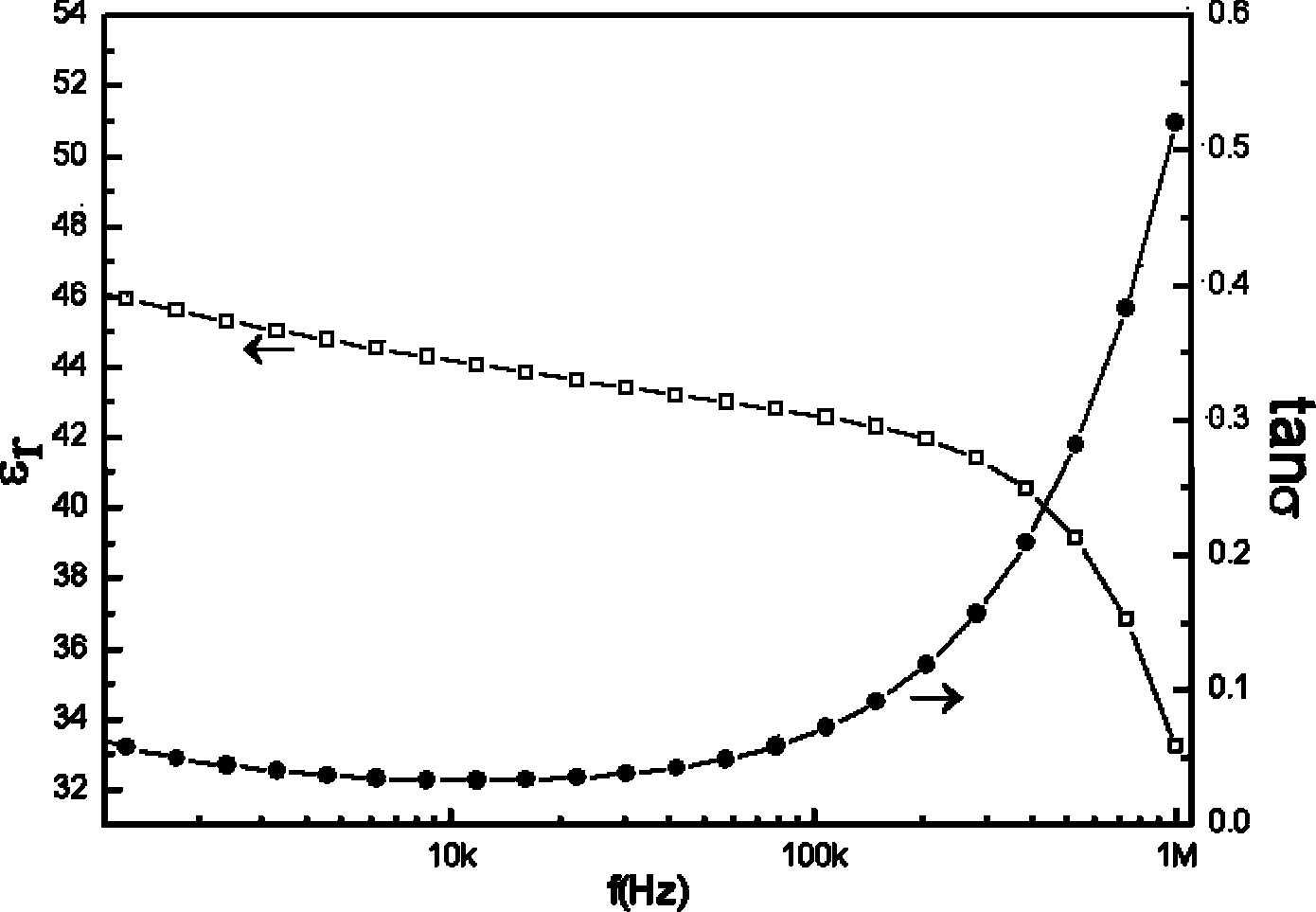Method for preparing bismuth ferrite film with dielectric property by adopting liquid-phase self-assembly technology
A technology of self-assembly and dielectric properties, applied in chemical instruments and methods, iron compounds, inorganic chemistry, etc., to achieve the effects of low leakage current, low requirements for experimental conditions, and less space charge
- Summary
- Abstract
- Description
- Claims
- Application Information
AI Technical Summary
Problems solved by technology
Method used
Image
Examples
Embodiment 1
[0016] Step 1: Configuration of precursor solution. Weigh Bi(NO 3 ) 3 ·5H 2 O, Fe(NO 3 ) 3 9H 2 O, measure glacial acetic acid, be dissolved in distilled water and be configured into a 200ml solution, stir at room temperature until completely clear, add citric acid, continue stirring at room temperature until the solution is clear, and obtain the precursor solution. In the precursor solution, the molar concentration of bismuth ions is 0.01 mol / L, the molar concentration of iron ions is 0.045mol / L, the volume fraction of glacial acetic acid is 2%, and the molar concentration of citric acid is 0.02mol / L.
[0017] Step 2: Functionalization of the substrate. The substrates were ultrasonically washed in deionized water, acetone, and absolute ethanol for 10 min. After irradiating with ultraviolet light for 20 min, soak in OTS (1vol%)-toluene solution for 30 min to prepare an OTS monolayer film, and dry at 120 °C for 5 min to remove organic matter. Finally, it was irradiated ...
Embodiment 2
[0022] Step 1: Configuration of precursor solution. Weigh Bi(NO 3 ) 3 ·5H 2 O, Fe(NO 3 ) 3 9H 2 O, measure glacial acetic acid, be dissolved in distilled water and be configured into a 200ml solution. Stir at room temperature until completely clear, add citric acid, continue stirring at room temperature until the solution is clear, and then obtain the precursor solution. In the precursor solution, the molar concentration of bismuth ions is 0.01mol / L, and the molar concentration of iron ions is 0.03mol / L. The volume fraction of citric acid is 2%, and the molar concentration of citric acid is 0.02mol / L.
[0023] Step 2: Functionalization of the substrate. The substrates were ultrasonically washed in deionized water, acetone, and absolute ethanol for 10 min. After irradiating with ultraviolet light for 20 min, soak in OTS (1vol%)-toluene solution for 30 min to prepare an OTS monolayer film, and dry at 120 °C for 5 min to remove organic matter. Finally, it was irradiated ...
Embodiment 3
[0028] Step 1: Configuration of precursor solution. Weigh Bi(NO 3 ) 3 ·5H 2 O, Fe(NO 3 ) 3 9H 2 O, measure glacial acetic acid, be dissolved in distilled water and be configured into a 200ml solution. Stir at room temperature until completely clear, add citric acid, continue stirring at room temperature until the solution is clear, and then obtain the precursor solution. In the precursor solution, the molar concentration of bismuth ions is 0.01mol / L, and the molar concentration of iron ions is 0.015mol / L. The volume fraction of citric acid is 2%, and the molar concentration of citric acid is 0.02mol / L.
[0029]Step 2: Functionalization of the substrate. The substrates were ultrasonically washed in deionized water, acetone, and absolute ethanol for 10 min. After irradiating with ultraviolet light for 20 min, soak in OTS (1vol%)-toluene solution for 30 min to prepare an OTS monolayer film, and dry at 120 °C for 5 min to remove organic matter. Finally, it was irradiated ...
PUM
| Property | Measurement | Unit |
|---|---|---|
| thickness | aaaaa | aaaaa |
Abstract
Description
Claims
Application Information
 Login to View More
Login to View More - R&D
- Intellectual Property
- Life Sciences
- Materials
- Tech Scout
- Unparalleled Data Quality
- Higher Quality Content
- 60% Fewer Hallucinations
Browse by: Latest US Patents, China's latest patents, Technical Efficacy Thesaurus, Application Domain, Technology Topic, Popular Technical Reports.
© 2025 PatSnap. All rights reserved.Legal|Privacy policy|Modern Slavery Act Transparency Statement|Sitemap|About US| Contact US: help@patsnap.com



